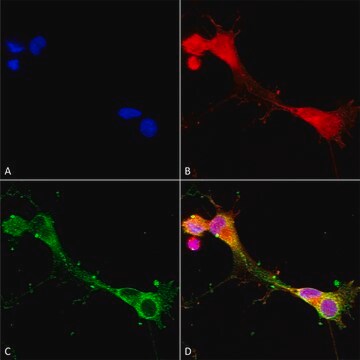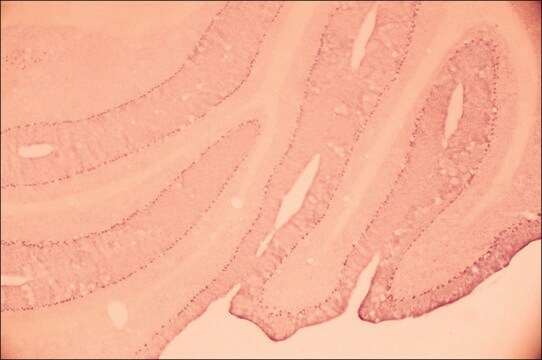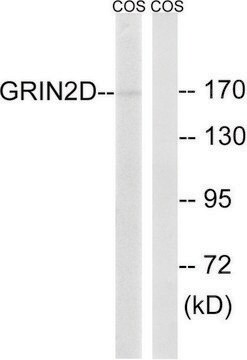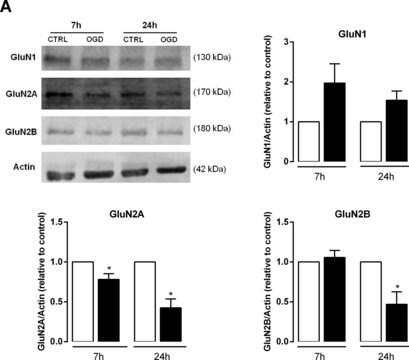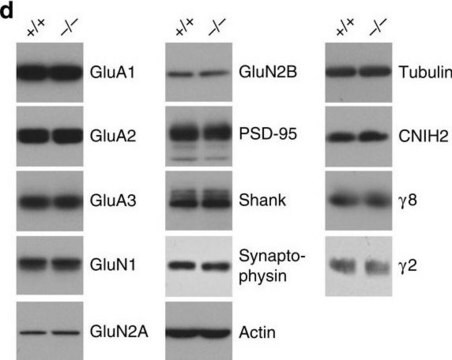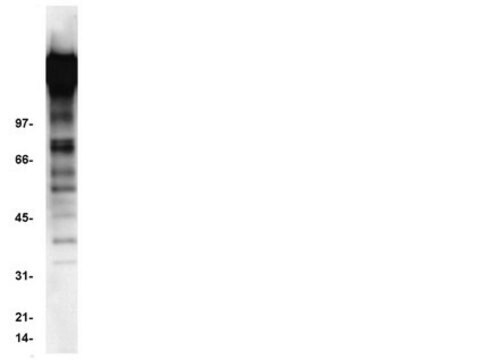M264
Anti-Glutamate Receptor NMDAR2A (NR2A) antibody produced in rabbit
affinity isolated antibody, lyophilized powder
Sinônimo(s):
NR2A Antibody - Anti-Glutamate Receptor NMDAR2A (NR2A) antibody produced in rabbit, Nr2A Antibody
About This Item
Produtos recomendados
fonte biológica
rabbit
Nível de qualidade
conjugado
unconjugated
forma do anticorpo
affinity isolated antibody
tipo de produto de anticorpo
primary antibodies
clone
polyclonal
forma
lyophilized powder
peso molecular
antigen 180 kDa
reatividade de espécies
rat, mouse, human
técnica(s)
immunohistochemistry: 1:1,000-1:2,000
immunoprecipitation (IP): 3 μL using 200 μg of rat brain
western blot: 1:1,000
nº de adesão UniProt
temperatura de armazenamento
−20°C
modificação pós-traducional do alvo
unmodified
Informações sobre genes
human ... GRIN2A(2903)
mouse ... Grin2a(14811)
rat ... Grin2a(24409)
Descrição geral
Imunogênio
Aplicação
Western Blotting (1 paper)
forma física
Exoneração de responsabilidade
Not finding the right product?
Try our Ferramenta de seleção de produtos.
recomendado
Código de classe de armazenamento
11 - Combustible Solids
Classe de risco de água (WGK)
WGK 2
Ponto de fulgor (°F)
Not applicable
Ponto de fulgor (°C)
Not applicable
Equipamento de proteção individual
Eyeshields, Gloves, type N95 (US)
Certificados de análise (COA)
Busque Certificados de análise (COA) digitando o Número do Lote do produto. Os números de lote e remessa podem ser encontrados no rótulo de um produto após a palavra “Lot” ou “Batch”.
Já possui este produto?
Encontre a documentação dos produtos que você adquiriu recentemente na biblioteca de documentos.
Nossa equipe de cientistas tem experiência em todas as áreas de pesquisa, incluindo Life Sciences, ciência de materiais, síntese química, cromatografia, química analítica e muitas outras.
Entre em contato com a assistência técnica